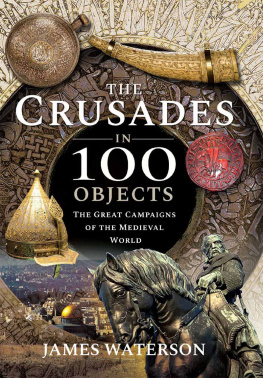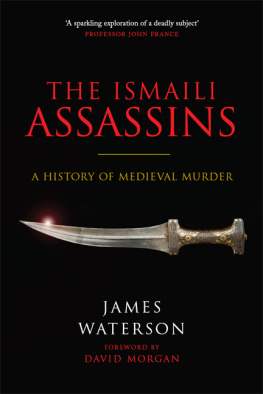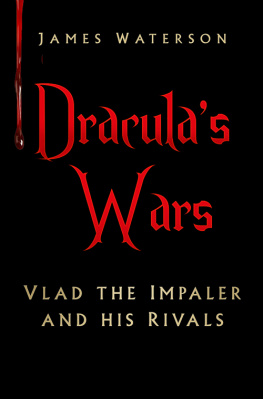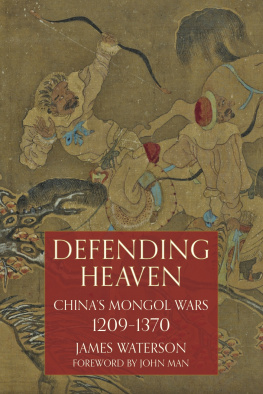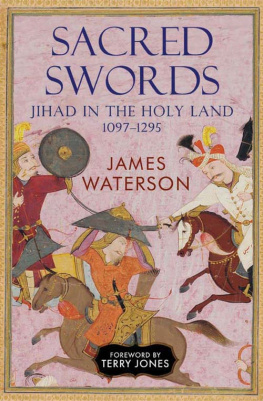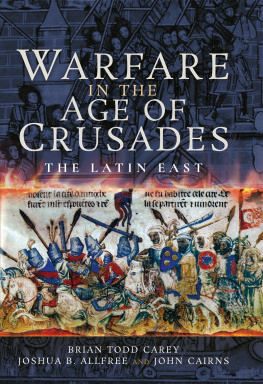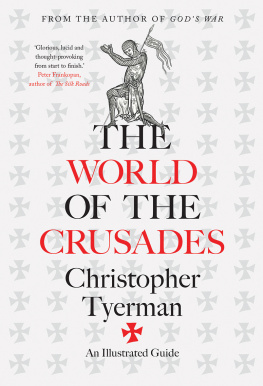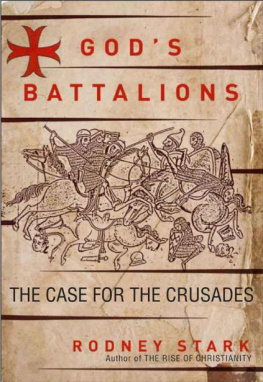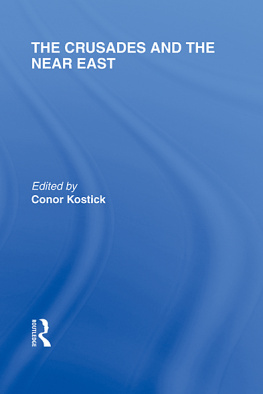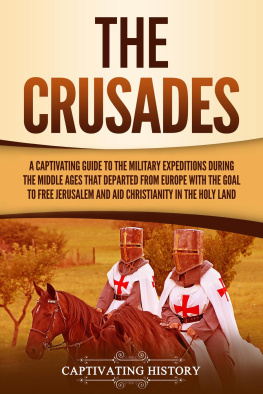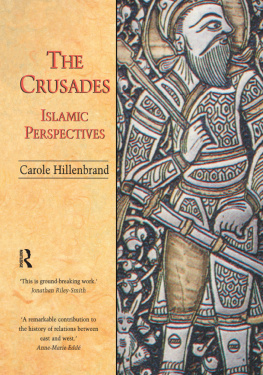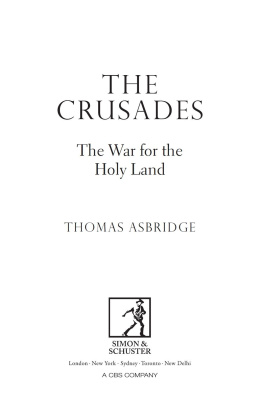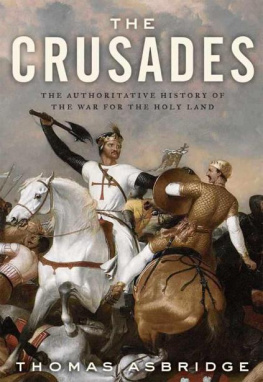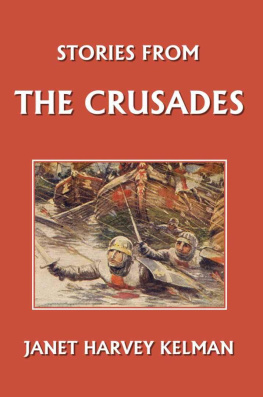Pagebreaks of the print version

The Crusades in OBJECTS
Per Anika,
apparuit iam beatitudo vestra .
The Crusades in OBJECTS
The Great Campaigns of the Medieval World
James Waterson
The Crusades in 100 Objects
This edition published in 2021 by Frontline Books,
An imprint of Pen & Sword Books Ltd,
Yorkshire - Philadelphia
Copyright James Waterson, 2021
The right of James Waterson to be identified as the author of this work has been asserted by him in accordance with the Copyright, Designs and Patents Act 1988.
ISBN 978 1 52679 530 4
ePUB ISBN 978 1 52679 531 1
All rights reserved. No part of this publication may be reproduced, stored in or introduced into a retrieval system, or transmitted, in any form, or by any means (electronic, mechanical, photocopying, recording or otherwise) without the prior written permission of the publisher. Any person who does any unauthorized act in relation to this publication may be liable to criminal prosecution and civil claims for damages.
CIP data records for this title are available from the British Library
Pen & Sword Books Limited incorporates the imprints of Atlas, Archaeology, Aviation, Discovery, Family History, Fiction, History, Maritime, Military, Military Classics, Politics, Select, Transport, True Crime, Air World, Frontline Publishing, Leo Cooper, Remember When, Seaforth Publishing, The Praetorian Press, Wharncliffe Local History, Wharncliffe Transport, Wharncliffe True Crime and White Owl.
PEN & SWORD BOOKS LTD
47 Church Street, Barnsley, South Yorkshire, S70 2AS, England
E-mail:
Website: www.pen-and-sword.co.uk
Or
PEN AND SWORD BOOKS
1950 Lawrence Rd, Havertown, PA 19083, USA
E-mail:
For more information on our books, please visit
or write to us at the above address.
Acknowledgements
I have written my books across two decades, and across a vast geographical range. I have also met kindnesses and warmth beyond measure across so many lands. In the twenty-first century these benevolences have come chiefly from the hands and hearts of Nizar, Tarek, Jihad, Jane, Lisa, Larry, Natalie, Jeev, Ian, Vicky and Arek.
From back in the now seemingly long-distant twentieth century I wish to thank once again Dr David Morgan for introducing me, as an undergraduate, to the Crusaders, their doughty Turkish and Kurdish opponents and to the Mongols, and Dr Michael Brett for his engaging lectures on the Fatimids and the naval warfare of the period. I also wish to thank Dr Anna Contadini for creating in me, despite my fairly philistine inclinations, an appreciation of the miniature painting of the Mamluk period, and for helping me to understand how later additions to objets dart were as much about changing the nature or intent of the piece as being simply aesthetic enhancements. Dr Brian Williams, formerly of the School of Oriental and African Studies, also deserves my gratitude for his encouraging responses after each of my books has been published.
One final thanks from the twenty-first century goes to Dr Anna Vinkov of Charles University, Prague, for her always charming, entertaining and cultured discussions with me on the topic of military castes in general, and on Mamluks, Crusaders, Samurai, Assassins and Landsknechts in particular. Her insights into the mythologising of the Samurai, another group like the Crusaders whose culture and period has been much romanticised and misinterpreted over time, have done much to shape this current work.
Introduction: What does it all mean?
T his collection of objects means something, just as the Crusades mean something. That meaning has changed significantly over time, and has often been mythologised, and myths, to paraphrase Cocteau, often become accepted as history, and subsequently affect the ideas and actions of later ages. This cascade of ideals and lore can be recaptured for us in the current age very effectively through a review of objects from the Crusades period (if such a thing can truly be said to have existed) and from subsequent periods. Some of the objects we will look at help us understand a little more the societies from which these ventures grew. They may also explain why the Europeans, once in closer contact with the East, were compelled by the discovery of its material wealth to take to the oceans and to explore further beyond the Near East and to seek the source of the luxurious items that were carried by the Italian maritime republics to Europe from Palestinian ports. I have also used objects from beyond the general timeline of the period to aid in illustration of material that is no longer available to us, or which represent ideas which remain with us today, and which evolved in the Crusades period.
That many of the patrons of these objects were men of the sword should not surprise us: the violent backdrop of Renaissance Italy and the simple thuggery of many of its lords did not restrain the production of exquisite works of art, and a passion for it among these often brutal individuals. Perhaps the art offered some redemption for the soul.
Many of these objects we will look at have changed their nature over time, as they passed through the hands of enemies and customers, whether that be through additions as in the case of the Fatimid rock crystal pieces to which filigree metalwork was added by French artisans, or deliberately unfinished Ayyubid and Mamluk metalwork that could be imported to Venice and there completed with local dynasties heraldic devices. Objects also acquire new meanings over time. That a German Kaiser of the late nineteenth century should hold the tomb of a sultan in such reverence that he felt compelled to donate a sarcophagus to it would be surprising if it were not for the fact that the sultan, Saladin, had already been immortalised as the avatar of chivalry by Dante and Scott. Perhaps what we are seeing in some of these objects is a very constructive case of Orientalism. What we see very little of in the period is an interest in the culture and technology of the West from the other direction, and that may offer a clue as to why whilst the Crusades essentially failed the Holy Land remained in the hands of the Muslims the West won out in the long run. Though this closing down of the Middle East to foreign ideas may well have had more to do with the traumas that Islam experienced from the East than from the knights of the West.
History is hopefully a search for the truth, or in the case of this work for the meaning of historical objects. Ranke gave all historians the task of wie es eigentlich gewesen to show simply how it really was. But how it was and how it is must always be affected by perceptions, so alongside fact I not uncommonly deploy poetry and romantic prose in these pages to more clearly delineate how meaning was mutated by contemporaries and by later writers. I make no apology for this despite the adage that truth is like poetry, and most people really hate poetry.
I firmly believe that we are still living with the consequences of the successful establishment of a Latin kingdom in Syria and Palestine in the eleventh century. In this work I hope to identify why that is the case, and why an understanding of why what happened then relates very much to what is occurring now in the worlds central lands and beyond.

